I’m about to cut out a dress by a Burda pattern. trying to fit my DD. She has narrow shoulders, and Nancy Zieman recommends measuring across the chest from arm crease to arm crease. A 14-inch measurement corresponds to a size 14 pattern. A 13 1/2 inch would use a size 12, and a 13-inch measurement would use a size 10, and so on for every 1/2 inch smaller, smaller sizes going down from size 14. I thought I would try this method, since nothing else has really worked for her or for myself, either, for that matter. But this is my first experience with Burda. Does anyone know if this same pattern-size/chest measurement correspondence applies to Burda patterns? Or should I just go by bust measurement?
Conversational Threads
Threads Insider
Get instant access to hundreds of videos, tutorials, projects, and more.
Start Your Free TrialAlready an Insider? Log in
Conversational Threads
Highlights
-
Sign up for the Threads eletter
This site is protected by reCAPTCHA and the Google Privacy Policy and Terms of Service apply.See all newsletters -
 Sponsored Content
Sponsored Content
Where to Buy
-

-

-

-

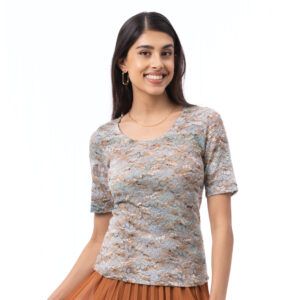
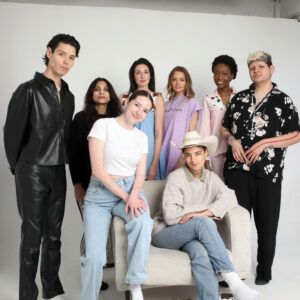
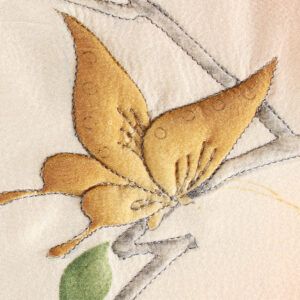

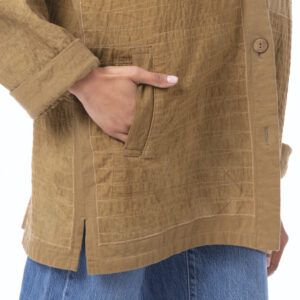
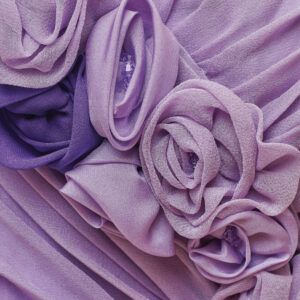
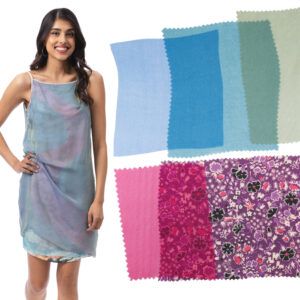
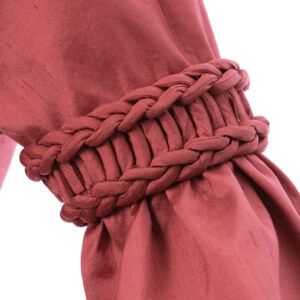
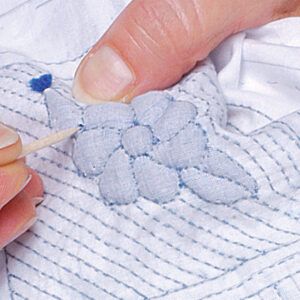
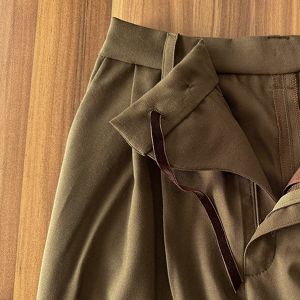






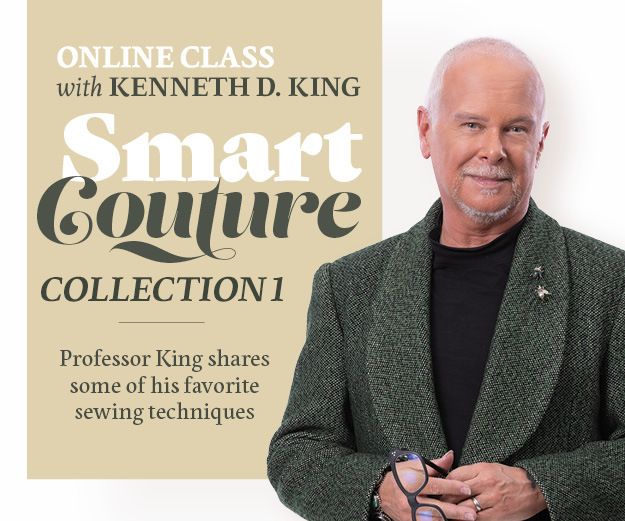





Replies
Josefly, the key to using Burda is NOT to choose a "size." Burdas have a size chart in the pattern somewhere, often on the pattern sheet itself, sometimes on the instruction sheet. What Burda wants you to do, rather than choosing a "size," is measure the body at the areas marked on the chart (including the neck, which no other pattern company concerns itself with). Then, you look at the chart and circle the size number that is closest in these areas. The chances are that you will be several different sizes, one for the bust, another for the waist, and so on.
When you trace your pattern, what you will be doing is gradually moving from one size line to another, which will give you a fairly customized pattern that corresponds to the body you're sewing for.
By the way, it's OK to trace between the size lines!
I am narrow in the shoulders and a D cup. I love Burda WOF and have had great results. I know that Sandra Betzina says to use bust measurement in European patterns. But for me, I use the upper bust measurement and do a fba. i also sometimes have to also do a narrow shoulder adjustment too. I don't add to the front in the hip area as the fba usually takes care of that.
Nancy
Thanks for your info. My daughter lives across country, and fitting her is going to be tricky, and on top of that I'm using unfamiliar patterns, so I'm grateful for advice on Burda fitting. I've been reading Sandra Betzina and Nancy Zieman for their pattern-fitting suggestions, and Zieman's tip on front chest measurement intrigues me--but doesn't specify whether it applies to patterns other than the major American patterns. (I took measurements from my daughter during a recent visit, and neglected to get the high bust measurement, but did get the front chest one.) According to the Burda measurement chart inside the pattern, I should use something between a 12 and 14, based on bust measurement. But using Zieman's tip, I would use a size 10, at least for neck and shoulders, and then adjust for bust and waist, etc., from there. I think I would have to begin increasing size at the underarm. The back neck width supplied on the pattern chart won't help me, I don't think. And I can't just measure the pattern and compare it to front chest measurement, since I don't know if there's ease involved -- seems like there would be, but how much, above the bust?. I guess I could lay out the Burda Pattern and compare it to a similar, same-size American pattern in the area above the bust.I'm thinking, though, that I should just get the high-bust measurement, and try the corresponding pattern size for shoulder/neck area, as you've suggested. (It may actually be the same as if I went by the front-chest tip.) I can see I'm going to have to adjust bust, waist, armscye, and sleeve, probably. Well, I've been wanting to learn to fit, so this will give me a good opportunity. I'll start on a muslin soon. Thanks again for sharing your experience.
Josefly,
What you are referring to - the change of a 1/2 inch per size is referring to how the pattern is "graded" that is a term used in drafting for making a pattern a larger or smaller size. this will vary a bit from company to company, and generally, certain size ranges have a "1/2 inch grade" smaller sizes may have a 1/4 inch grade (ie the width and length will change up to a 1/4 inch per size - but certain parts of the pattern may change less amounts) larger sizes such as size 20 and up will have a 1 inch grade - they will get one inch wider for each size.
Mostly all size changes are 1/4 inch in length even when its a 1/2 or 1/4 inch grade. (I hope I'm not getting you too confused).
If you look at the multi sized patterns you can get a feel for this by seeing how far apart the different size lines are spaced - the 1/2 inch will be divided by the number of seams - one front and one back will have 1/8 inch added to each seam, that is a total of 1/2 inch all the way around the body. If you were to purchase a pattern in the smaller size group and a larger size group, you would see the difference in the amount of 'grading' done .
But, this doesn't answer your question or help you any.
What you need to do is make the garment in muslin first, and pin fit the areas so it fits her correctly. Patterns are drafted to the 'average' size and each pattern company has its 'fit model' none of us are that ideal so we have to learn to adjust the fit.
Thank you for taking the time to answer. I think I was looking for some magical solution that would give me at least a starting place, and Nancy Zieman's front-chest measurement sounded like the ticket. I think I can follow directions to make pattern changes to adjust bust, waist, hips, but the shoulder area has always been the most confusing for me, is always an issue for me and my daughter, and I'm not sure about sleeve and armscye adjustments that may be involved. I'm going to jump in and tackle it though.This forum is populated with the most encouraging people - I'm so grateful!
"...but the shoulder area has always been the most confusing for me, is always an issue for me and my daughter,"Roberta Carr, a Burda instructor for many years, emphasized that Burda was so good about skeleton size, which is different from the "soft stuff." She said that, alone among pattern companies, Burda had you take the neck measurement, and the neck measure was also the shoulder size. You might need a larger size for the bust, but for most people, the thickness of the neck was well-correlated to the size of the shoulders.
Good. It looks to me from the size chart in the Burda pattern that the neck is measured in the back only, I suppose from shoulder seam to shoulder seam, at the place a jewel neckline would be? I'll get that measurement from my daughter, and see how it compares to her other measurements. Thanks so much.
"It looks to me from the size chart in the Burda pattern that the neck is measured in the back only"Noooo! Look again. The diagram of the figure clearly shows a dotted line running all the way around the neck, about where a close necklace would lie. And the size chart gives a series of lengths to choose from that are clearly a lot longer than the back of the neck alone.You have to take the measurements shown on the figure diagram, and relate them to the numbers on the chart.
Whoops. Yep, you're right. I hadn't looked at the actual neck measurements, just at the drawings, and the neck measurement line on the front didn't have an identifying number relating it to the size chart, so ... oh, well. Thanks for the correction. Guess I would've noticed something awry when I compared measurements.However, now that I'm measuring my own neck, I find it difficult to know where to measure. I know it's supposed to be where a close necklace rests, but my closest necklace (16 inches) rests at the exact point where my neck circumference matches the length of the necklace, of course. And the Burda chart relates that to a size about 5 sizes larger than usual. I guess that's the wrong place to measure! I hope this brings a smile to everyone's face...I'm feeling like a complete idiot!So I'll go with a measurement I can be sure of.
Are your referring to the same Roberta Carr that authored a Couture Sewing Book? Her book was so easy to follow, unlike some of the others out there. If so, what has become of her? I have not, for years now, been able to track her on the Internet.
That's the lady, Wanda! At intervals, I do a web search to try to find out what happened to her, but it's as if she dropped off the face of the earth. You'd think that if she were deceased, her dates would appear in references, but no--nothing. Very odd for someone who was important to the sewing business.
I agree. Her Couture book, while the fashion pictures are dated, there is information there that is no where else and wonderfully easy to understand and use. Her bound buttonholes and the finish for the facing are just fabulous. The book is available on Amazon and you can get a used copy for not too much. Definitely worth adding to your bookshelf.
I haven't seen anything on her for a while either.
This is all really helpful, and the part on muslins. I have very good sewing technical skills, but my fitting skills are very weak. Also, someone said, we don't see ourselves accurately. That's also where the accurate measurements come in. Also, some style/design books suggest taking a good look at ourselves in underclothes, or ballet leotard (something I would generally avoid), and check out our PROPORTIONS. I have been reading French books on that (readily available in this French province, at the libraries). For example, though my waist is "large", my very big hips, etc. give me "shape". So, no more camoflague inside tents for me. Curves here I come, and fitting, you can't get me down!!!!!! Thanks so much. Also for humour, always needed!!!!!!!
The July issue of Threads did an article on making your own croquis. Talk about seeing your body as it really is! I have seen this before, but never done it. I set up my digital camera on the tripod, used my self timer and took some pics of myself in a tank and tights. I followed the directions and now if I see something that I like I draw it on a tracing of my figure and at least I don't waste my time sewing something totally unsuitable for my figure, but I can try out patterns I like but am not sure of. It is a really big help. I also, per another article started a design notebook with pictures or drawings and fabric samples to go with each piece. I sew alot, but didn't seem to have real outfits, per se. This really focuses me and I hope not to waste time in sewing things that don't go togeher. Or I look in my closet and see what I need to make an outfit and put that on the list. So far, I haven't finished too much, but I have altered the patterns and cut out a couple of muslins. I am going to cut out a few more muslins and then sew them at the same time. Then on to the real stuff.
Nancy, sorry re: delay, also didn't get notification of message, and senior doggie was under the weather. What better thing to up morale than sewing, and sewing friends. Interested in your croquis, sounds very helpful. Also, that you are making lots of muslins, and then will sew. When I was somewhat (?) thinner, I adored cutting out about 5 or more outfits, and blissfully sewing after. But, even then, fit was a real challenge. I am going to make some muslins soon, and also work with the Lutterloh system, where you up-size a diagram, according to some formulas, using your measurements (German). I also have had bronchitis, not 100% better yet, so a little "behind myself". However, the quest for fit continues. I peeked at a book a friend bought me, on toiles, but think the muslin idea is better for me. Feel I'm too curvey to trap myself in anything that tight, for one thing. Like you, I don't want to waste my time sewing "duds". I really like comfy sports wear, with some kick to it, or designer and/or vintage/vintage look. I get a lot of vintage patterns at church-run thrift shops, where I also find gorgeous exclusive fabrics (mind you, small pieces sometimes, imagination is coaxed). That's one of my passions, the looking. Also, I find fabulous, often older sewing books. These books also contain some VERY helpful, and lesser known, fitting/alteration ideas. So, I read them like "novels". So, the search goes on, for that elusive things called FIT, me and my curvey self, with narrow upper chest. I am also finishing up some UFO's, some years old, of lovely fabrics. Since this is after the fact, I am adding gussets. Barbara Deckert has article on this, I think in Threads archives. Also, similar mini-articles by her monthly, in Sew News' Q & A. Happy sewing!!!!!! Glad you love couture sewing (yummy), and gorgeous fabrics, and lovely fit. Me too!!!!!!!
Bobbie Carr is alive and well, she did have a bout with cancer a few years ago, and has slowed down since then, but I saw her last year.
Good to know! Thanks.
I am glad to hear that she, one is alive, and that she is doing better. Thanks for the update.
Josefly,
I'm not sure what you need to do with the bust area - is your daugter large busted? (witht the small shoulders.does the pattern shoulder seam hit at the shoulder or is it a dropped shoulder? do you have problems with the angle of the shoulder or just the length?probably the easiest way for me to tell you to adjust the length of the sholder without messing up the sleeve or bust area is to cut along the sewing line of the pattern from the tip of the shoulder down the armhole area just to the end of the armhole - but don't cut it all the way off, just leave a tiny bit of paper attached (at the underarm side seam), (you've cut loose the seam allowance) Now, just angle the seam allowance that you've cut loose in towards the neck edge the amount you need to shorten the shoulder.Where you put it will not match up exactly with the previous line of the shoulder seam - just blend them together so you get a straight line.Clear as Mud????
My daughter's not full-busted, and neither am I. She's 35 1/2 inches (regular bust measurement), and barely a B cup. But somehow the shoulders are always too full, there's just too much fabric across the front of the chest, above the bust. She doesn't like to wear a bra, or if she wears one it's one of those very soft things, and as a result, her bust point is relatively low--about 1 1/2 inches below the bust point shown on McCall's patterns, for example. Then she has a large waist and hips, compared to her bust. It appears to me that her dress will be a size 10 in the neck and shoulders, tapering to a 16 at the hips, except that with this full skirt, the hip size is not so much of an issue.
The dress is a sort of shirt-waist style, with a waist and gathered skirt, a narrow band collar, a little bit of puffed gathering at the top of the sleeves. It's Burda 8000
(http://www.burdamode.com/Dresses,1000003-1275114-1128998-1005105,enEN.html if you want to see). So the sleeve seam is at the shoulder. I don't believe the slant of the shoulder seam is a problem, but I've never sewn on a Burda pattern before. I need to compare the slope with the American patterns I'm more used to, I guess.
I want to make sure I don't take out anything in the back, because she seems to need the width there. I'm also concerned about the vest, and the gaposis that usually happens when I try to fit a sleeveless vest on myself. I don't know yet if this will be a problem with my daughter. Am I crazy to try to sew long-distance for her?
Your instructions for altering the shoulder width without changing the armscye are very clear. I assume I will ease the back shoulder to fit the new front shoulder seam, in order to preserve the width in back.
It's so great to have contact with people who've sewn with Burda patterns before, and who have so much experience with fitting. Thank you, thank you, thank you.
first, Yes, I think your nuts if you are trying to fit this long distance and are not sure what your doing, but, having said that....
It sounds like your daughter has a 'hollow' chest. Those of us flat chested women that don't have any cleavage!!! LOL I'd rather be flat chested than have to heavy a bust.With the high neck line on this dress, I wouldn't worry about altering for the hollow chest - it's important on lower cut things, but not as big a deal on this.Ok, you do need to shorten the back shoulder the same amount as the front. The back shoulder can be about 1/4 inch longer than the front shoulder (its built in on some patterns but not all - this extra is in place of a shoulder dart, but its just eased in and is usually about 1/4 inch.The back - does she have prominent shoulder blades that she needs the extra room across the back? - is that the level where she needs it? In that case, what you would want is to have a back shoulder dart and make it wider (lengthen the shoulder seam, which adds the room where its needed in the back- this will pivot out the top edge of the back armscye - you could pivot it from the level of the notch)Or, I suppose its the same if you don't shorten the back shoulder length any at all, but if you have more than 1/2 inch extra you may not be able to ease the extra in nicely and then you could turn it into a small dart.From looking at the picture, I can't tell if its just front waist darts or princess line. Princess line is easy to fix the hollow chest, but front waist is more difficult. But on the other hand, if she has a low bust point its much easier to just lower the front waist dart points to where they need to be.I hope I'm not overwhelming you with too much info here.
Yes, I am nuts. But happy.: ) And just stubborn enough not to be defeated by a pattern alteration!So I'll keep in mind the possible need for a back shoulder seam dart. And hopefully I won't have to take so much out of the front shoulder seam...I think Nancy Zieman points out that a 1/2 inch reduction would be a about a 10% change, which is a lot...Thanks for getting back to me...all suggestions are eagerly received.
The average shoulder length on women is 5 1/4 inches so I guess 1/2 inch would be 10% (for what that's worth) anyway,
The best book I can recommend on doing alterations to patterns is
"Fitting and Pattern Alterations. A multi method approach" by Liechty, pottberg &Rasband. you can find it on amazon and it will show you all the alterations I was talking about, its a really great book. it shows how to slice and dice a pattern.On another note, I'm really excited, I just bought a Euro pro treadle sewing machine on ebay - it looks like its in perfect condition . I learned to sew (many yrs ago - though my kids aren't quite as old as your daughter)on a treadle machine!
Edited 10/5/2006 10:25 pm ET by HeartFire2
Congratulations on your treadle machine. What fun. My mom had a peddle machine in the '40's, but a neighbor had a treadle, and it was fun, and surprisingly easy to learn to use.
Hi Josefly,
From my experience, the Burda patterns are much more fitted than the American ones and have less ease so I suggest you go by the bust measurement and then you can make the narrow shoulder changes as in Nancy Zeiman's book.
I've actually experimented with both methods you are describing and it seems to me that it's 6 of one or 1/2 dozen of the other. Either you start with fitted shoulders and increase the bust or start with the bust and narrow the shoulders. I have found Nancy's method easy to follow and the note in the section on narrow shoulders (p.37) says "The altered armhole is the same size as the original armhole. It may appear slightly higher but will fit correctly."
I also find that if I have a RTW item in my closet that fits, I measure the finished garment (as suggested in a Threads article) and use that as my guide when trying to get my pattern to fit.
You can always get your daughter to measure her own high bust and send you the measurement.
As I've learned from many years of reading Threads there is no one right way to do things. Experiment a little and see what's easiest for you. If you have to make 2 muslins instead of one you will only increase your knowledge and benefit from the effort.
Edited 10/4/2006 8:46 am ET by stitchintime
I agree, if you have never made Burda before, then a muslin is a must. It is certainly cheaper than using the fabric as a muslin! Not all Europen patterns are the same, I am making a Neue Mode jacket and it is definitely different than Burda, even though they are both German. Even the big pattern companies are different from each other.
Nancy
Thank you. This is exactly what I wanted to know. I suspect also that there is not much difference in going with high-bust compared to front-chest measurement. Since this is Burda, I'll make my first attempt using the regular bust measurement, and adjusting for narrow shoulder. I expect, as you suggest, that I'll have to make a couple of muslins.I was encouraged by your message. :) I do have a lot to learn about fitting, even though I've been sewing for many years.
FYI Neue Mode is made for a younger figure. Burda is not. I had to lower the bust dart on my NM pattern significantly, but haven't had to do that on Burda. That's why it's important to take as many measurements as you can.
Burda's fitting system is a bit different than when Bobbie Carr was using it, I think. They seem to have modified their sloper.
Yes, I'm going to get that high-bust measurement before I do any cutting. I'm thinking I really must do at least one muslin, send it to my daughter, get her comments, before I do any cutting on the fashion fabric. And I'll get the back neck width, too. Your point about the bust point being lower on Burda patterns is great...I'll keep that in mind.Thanks so much for your messages. I'm e-mailing to myself all this great info I'm getting, so I can put it in my sewing file and refer back to it.
Edited 10/5/2006 1:47 pm ET by Josefly
In response to your statement about having a lot to learn about fitting, even though you have been sewing for many years...I ask the question for all of us who engage in the pattern-fitting dilemma 'what did we miss' either at the foot of our mothers, grandmothers, aunts, or school teachers in home ec courses.
All of us seem to have a great ability when it comes to garment construction, but something is lost in the area of fitting, and for some, like me, I can't seem to get it straight in my mind what changes go where and what corresponding changes need to be made.
What did I/we miss along the way?
That's a good question, Wanda. And I don't know why I didn't learn from my mother how to fit...I wish I had her skills. I think she sewed a lot more than I have, and wasn't afraid to dive in, with any fabric or any style. She never made a muslin, never had a dress form, and I don't remember her having a tape measure! She'd use a length of string or ribbon to measure, and usually pinned pattern pieces together to pre-fit before cutting. Somehow it always turned out beautifully. There I go, though, down memory lane again.
Speaking of which, my mother never used a pattern at all for all of my clothes (as well as knitted garments) - she just held up the fabric to my body & cut it in whichever style she chose & everything turned out well (not couture, of course, but attractive & different from anything anyone else wore). I agree with the others in that home ec classes taught sewing well, but not fitting. I have made many garments that are unstructured, modular pieces & tweaked them for a better fit - they are fun to make & super easy, like the bog coat that was in Threads a couple of years back. I made 2 out of blankets (queen sized) (& 1 out of fleece with a border design) where you fold over the top down about 14 inches or to where you would want the bottom of your armscye, then measure it with your arms extended from wrist to wrist across with ease so that you can bend your arms, decide upon the wrist width & cut it to taper to the underarm. Stop cutting. Fold the bottom parts to the middle of the centre front, then cut up the centre front. One coat was made with wide velvet bias covering all the raw edges, then zigzagged together (I cut the flannel lining at the same time out of a heavy flannel sheet, as this was my first effort & didn't want to spend a lot of $ in case it failed). All layers were sewn at the same time. I did applique embellishment on the coat before I sewed the lining, etc., & made big pockets. It turned out amazingly well & I wore it for years. My second effort had thinsulate lining & was the warmest winter coat I've ever owned. Both blanket coats were washable. I look for patternless sewing books all the time & have found a few that are really good.
I'm e-mailing your message to myself to put in my sewing file. I'd love to see your coats. I've done very little with fleece - just a bed-jacket for my mom-in-law a couple of years ago - but would love to try something with some decorative stitching as I've seen in some of the books. I've been distracted with sewing a superman costume for my grandson, age 5. So I haven't been able to get to the Burda pattern that started this chain. I just this morning put the finishing touches on the costume, and am now headed out for some inexpensive fabric to make a muslin...nothing in my stash I want to sacrifice.
Thanks for your comments! Sewing with fleece is fun & reasonably fast, especially if you put tissue or plastic bag strips under the fleece (depending upon the thickness of the fleece - if it's really thick, you probably will need the tissue or plastic). Seams don't need to be finished, as they don't unravel. For information on sewing & the many embellishment options, check your local library for Nancy Cornwell's "Polar Magic", "More Polar Fleece Adventures", and a couple of others - also "Quick Sew Fleece" by The Patchwork Place. You'll be an expert in no time! Happy sewing!
Gloria
Yes, thanks for the recommended books. I have Nancy Cornwell's Polar Magic, and look forward to checking out the others.....right after I get this muslin made for my daughter. First Burda pattern for me, and I've already had to post another question about it, under Patterns. I feel like an absolute novice...maybe a good thing?
Sorry - I forgot to mention that, unfortunately, I never took photos of my coats (they are in full colour in my mind, though, which is no help for you!). I could draw them, though, if I can figure out a way to send them. (Can you guess I'm new to this forum & fairly new to computing?) I keep forgetting to take photos of the clothes I make for myself & others (also didn't take photos when we renovated a 1920s house!). I must be a very slow learner!
Sounds like your mother had a good eye for fitting and was blessed with the natural sewing talent to go with it. She probably intuitively knew what to do and wasn't afraid to do it. I will think of her the next time I am afraid to follow what I think I should do.
I read somewhere that when you buy clothing, you should assess how the garment "feels" on you before you look in the mirror to see how it looks on you. I'm wondering if we shouldn't be trying to develop this "feel" ourselves. After all, if it doesn't fit properly, it's not going to feel right and vice verse, if it doesn't feel right, it probably doesn't fit properly. You can generally feel if the garment is too tight, too loose, pulls in one direction or another, is too long or too short for you personally and the way you like to wear your clothes.
I know I get too caught up in trying to achieve the "perfect" fit. On my next project I may just shut my eyes and see how it feels.
Any thoughts?
You're absolutely right about the feel of clothing - I never thought of that before, because I, like most people, look to see how it looks first. You're on to something. I am definitely going to do this now, as you can definitely feel where parts don't fit quite right. Yah, the strive for perfection is definitely ongoing - will we ever get there? In the meantime, I have lately been making more unstructured clothing (the fitting, if any, seems to be easier, as you can see where it's needed). The clothing is fun, also more comfortable & quicker to make &, maybe a cop-out on my part, lessens the stress of the perfect fit (especially on an imperfect body). It's also easier to embellish. Of course, we still have to have the proper fit in more formal clothing. Thanks so much for your comments & the insight you provided! Happy sewing!
Yes, you can use Nancy's method with Burda. I called them with this same question. Remember the WOF does not include seam allowances while the Burda patterns do. If you can't make a muslin, get all the measurements Burda asks for then MEASURE THE PATTERN to make sure they correspond. It is a very common fitting problem, a narrow shoulder area and fuller bust.
Also, check her upper bust measurement against the WOF measurement/size chart. You may find it corresponds to the size Nancy recommends or is one size off.
If it's any consolation, I just finished a Burda blouse with puffed sleeves like your pattern (which,by the way, is very pretty - isn't internet great!) and my finished shoulder length is 4 3/4 inches. So don't worry about what is standard and what is average.
I don't know who they measure for this average shoulder width, but mine is so narrow that I would be narrower than the smallest size! I cut 3 sizes smaller on top and still do a narrow shoulder adjustmetnt, which is really easy.
Nancy
This thread is exciting as I've been working on a better shoulder fit and have discovered that my neck is small (14") and makes my shoulders appear broad. They seem to be 4 3/4 or 5". Until I moved down to a size 8 (big four) every blouse hung off the edge of my shoulders. It appears that a small neck gives the appearance of broad shoulders, when in reality, it is more like long shoulders.
I must take another look at Burda patterns; they may mean fewer alterations.
I second the Leichty, et al book. It is very helpful, particularily when I know what needs changing.
Beth
Dear stitchintime, and other posters in this thread... It's good to know others have the same issue...a great span of sizes on the same body! Maybe one reason I think that my shoulders are narrow is because my neck is so big!? I've never thought of that! Funny how we see - or don't see- our bodies. It's not just bust, waist, and hip measurements that are important, is it? I'm resolved to measure everything now. If I can get some help, I'll even do a croquis, as suggested by Nancy Shriber in a recent Threads. Think I need to start ALL OVER! Oh, yes, and thanks for recommending the Leichty book...I'm checking it out.
Edited 10/6/2006 10:40 am ET by Josefly
Oh, yes!!! Do try to get an accurate croquis!
My DD, the one with a digital camera, took 'blackmail' shots of me in swimsuit, sent the file to my computer via e-mail, and I printed them out (she promised to delete her copy) LOL!
I then copied (tracing paper) the outline of this old saggy, baggy body and compared it to the croquis 'family' supplied by Threads. Discovered I have rather square shoulders and a fluffy right side (compared to left side) and am short of leg and not petite although only 5' tall!
And the tape measure around my neck said the same thing about my neck - wide! add to that some well developed shoulder muscles and there you have it.... no wonder fitted shirts and jackets never seemed to sit right. And now after years at the computer and sewing machine, I carry my shoulders somewhat forward, making my back wider and my shoulder points not where the seam is!
I am starting over too,
Becky
My first duct tape dummy made years ago really helped me pinpoint a lot of my fitting problems, things that you just don't see on your own.
Yes, Becky, I do think I need the croquis. Lately some houseguests and other projects have kept me from doing anything sewing-related, but I'm looking forward to getting down to studying my own body, and learning the fitting techniques, ...soon. When these guests leave...And then, my daughter's dress. I've (maybe mistakenly) bought fabric for the dress and vest that started this thread, and I desperately want to get it made for her before cold weather hits. So next comes the muslin for her, and then we'll see where I go from that. I appreciate everyone's help. I'm also going to re-read the latest Threads article on starting fitting at the shoulder.Thanks for your comments, and keep your fingers crossed for me. I'm sure I'll have more questions as I go along, but don't want to bore folks on this forum.
Oh I'm sure it won't be boring! I am trying to get the shoulders right on a simple jacket that should have been done a week ago!! I think I'll settle for almost good on this jacket and go back to the tissue and fit again! I must have missed something the first time!!
Becky
This post is archived.